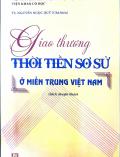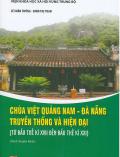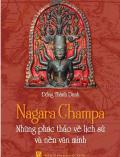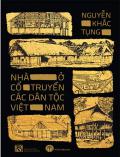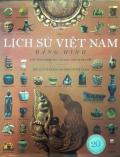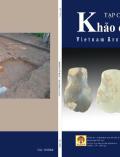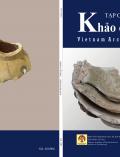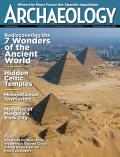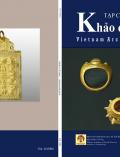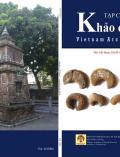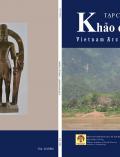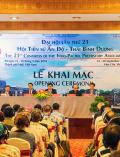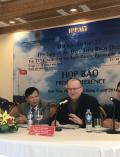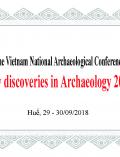Settlement patterns and cultural landscapes in the past of Oceania
Conveners: Christophe SAND – Institute of Archaeology of New Caledonia and the Pacific (IANCP) - christophe.sand@iancp.nc; Frederique VALENTIN – Arscan-CNRS (France)
Archaeological surveys have since decades identified in the archipelagos of the Pacific a diversified set of pre-contact settlement patterns, testimony of former cultural traditions of landscape appropriation and enhancement. These rank from sometimes massive habitation, ritual or funerary constructions to dense clusters of village/town or fortified settings, as well as extended surfaces of intensified horticultural arrangements. Until recently, the vast majority of the maps produced by archaeologists where the result of long and painstaking survey projects, often in scrub or forested ecological environments, limiting the visibility of field remains and impacting on the extent as well as sometimes the completeness of the final maps. The ever-growing corpus of technical high resolution methods applied to the study of archaeological landscapes, especially (but not only) with the recent development of LiDAR (Laser detection and ranging) coverage in a number of islands across the region, has allowed to renew interpretation of the density of former landscape uses across Oceania. This has prompted reconsideration of a number of well settled assumptions, like the supposed poor use of Melanesian landscapes when compared to Polynesia. This session proposes to present a series of case-studies on the latest developments of archaeological and related studies in the field of cultural landscapes in the Pacific region, addressing different approaches associated to the wide range of techniques that can today be applied to this topic.
Archaeological surveys have since decades identified in the archipelagos of the Pacific a diversified set of pre-contact settlement patterns, testimony of former cultural traditions of landscape appropriation and enhancement. These rank from sometimes massive habitation, ritual or funerary constructions to dense clusters of village/town or fortified settings, as well as extended surfaces of intensified horticultural arrangements. Until recently, the vast majority of the maps produced by archaeologists where the result of long and painstaking survey projects, often in scrub or forested ecological environments, limiting the visibility of field remains and impacting on the extent as well as sometimes the completeness of the final maps. The ever-growing corpus of technical high resolution methods applied to the study of archaeological landscapes, especially (but not only) with the recent development of LiDAR (Laser detection and ranging) coverage in a number of islands across the region, has allowed to renew interpretation of the density of former landscape uses across Oceania. This has prompted reconsideration of a number of well settled assumptions, like the supposed poor use of Melanesian landscapes when compared to Polynesia. This session proposes to present a series of case-studies on the latest developments of archaeological and related studies in the field of cultural landscapes in the Pacific region, addressing different approaches associated to the wide range of techniques that can today be applied to this topic.
Thông báo
Thứ năm, 11 Tháng 12 2025- 17:31
Thứ hai, 29 Tháng 9 2025- 18:20
Thư viện
- Tác giả: Trung tâm Nghiên cứu Kinh Thành, Viện Khảo cổ học
- Nxb: Khoa học xã hội - 2025
- Số trang: 592tr
- Khổ sách: 24x29 cm
- Hình thức bìa...
- Tác giả: Trung tâm Nghiên cứu Kinh Thành, Viện Khảo cổ học
- Nxb: Khoa học xã hội - 2025
- Số trang: 255tr
- Khổ sách: 24x 29cm
- Hình thức bìa...
- Tác giả: TS. Nguyễn Ngọc Quý (chủ biên)
- Nxb: Khoa học xã hội - 2025
- Số trang: 288tr
- Khổ sách: 24cm
- Hình thức bìa: mềm
- Tác giả: Lê Xuân Thông - Đinh Thị Toan
- Nxb: Khoa khoa học xã hội - 2024
- Số trang: 394tr
- Khổ sách: 16 x 24cm
- Tác giả: Đổng Thành Danh
- Nxb: Khoa học xã hội - 2023
- Số trang: 248tr
- Khổ sách: 16 x 24cm
- Tác giả: Louis Malleret
- Nxb: Tổng hợp TP.Hồ Chí Minh - 2023
- Số trang: 567tr
- Khổ sách: 16 x 24cm
- Tác giả: Nguyễn Chí Bền
- Nxb: Khoa khoa học xã hội - 2024
- Số trang: 417tr
- Khổ sách: 16 x 24cm
- Tác giả: Nguyễn Khắc Tụng
- Nxb: Khoa học xã hội - 2023
- Số trang: 695tr
- Khổ sách: 16 x 24cm
- Tác giả: Đông A
- Nxb: Đại học sư phạm-
- Số trang: 660tr
- Khổ sách: 25x30cm
- Hình thức bìa: cứng
Tạp chí
Dày 100 trang, khổ 19x27cm
Dày 100 trang, khổ 19x27cm
Dày 100 trang, khổ 19x27cm
Dày 100 trang, khổ 19x27cm
November/December 2025 - Archaeology Magazine
Dày 100 trang, khổ 19x27cm
Dày 100 trang, khổ 19x27cm
Dày 100 trang, khổ 19x27cm
Dày 100 trang, khổ 19x27cm
Tin tức khác
24 Th9 2018 06:12
22 Th9 2018 11:09
28 Th8 2018 15:04
15 Th8 2018 13:10
25 Th7 2018 04:21
25 Th7 2018 04:19
Copyright © 2016 by khaocohoc.gov.vn.
Thiết kế bởi VINNO
Tổng số lượt truy cập: 10441959
Số người đang online: 19



